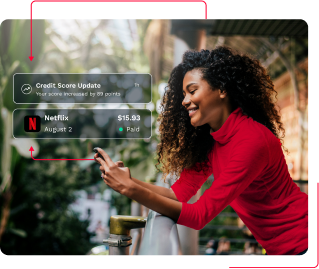
Jumping into the world of credit-building can be confusing, especially for the beginner. Getting approved for a credit card can be quite the hassle. Thankfully, the options for those looking to grow their credit are becoming broader and more advanced.
As you narrow down your credit-building options, you may be wondering: what is the difference when it comes to secured vs. unsecured credit cards?
In this article, we’ll discuss the main differences between secured and unsecured credit cards. Then, we’ll share three things you need to know before choosing one or the other.
The main difference between these two types of credit cards is that a cash deposit is required as collateral for a secured credit card.
Unlike an unsecured credit card, which doesn’t require any collateral at all, secured credit cards act as an option for people who continuously find themselves being rejected by creditors…but they come with caveats.

It can be difficult to navigate credit card options and find one that meets your needs. However, having all the facts can help you make the right decision. Here are three pieces of advice to help you choose the right credit card for you:
Because of the deposit required with secured credit cards, most borrowers won’t have any issues with being approved for this type of card. That’s because the risk to the creditor is lower than with an unsecured card.
Regardless of the type that you choose though, the information required for the application (such as your social security number, address, and more) will be the same.
When it comes to being approved for a secured credit card, it’s important to remember that the security deposit will determine how much you can spend on the card, also called your credit limit.
The more you pay up front, the higher your credit limit will be. Most secured cards require deposits somewhere between $200-$500.
Learn more: Why Am I Not Being Approved For A Credit Card?
Both secured and unsecured credit cards also have their own interest rates (also called APRs), fees, and other requirements. Although these terms vary greatly depending on the card and the borrower, you can expect higher interest rates and fees for secured cards.
Despite your deposit, the interest rates for secured credit cards are typically very high. This is because secured cards are most often used by borrowers with poor or unestablished credit. Many secured cards offer one APR for all users, whereas unsecured credit cards will have a range of interest rates depending on the borrower’s credit rating.
To avoid racking up interest charges, you should only use your credit card for purchases you know you can repay within the same month. This way you’ll be able to build credit without increasing your debt.
Regardless of the type of card that you choose, carrying a line of credit can be helpful for your financial future. Both secured and unsecured cards will add to your credit history and help to balance out any negative credit you already carry. To build credit, it’s important to use your card responsibly. The best way to do that is by:
Another issue with secured cards (and unsecured cards with low balances) is that it’s very easy to DAMAGE your credit rather than improve it. This is due to a factor called your “credit utilization ratio.” This ratio makes up about 30% of your credit score.
When you have a low balance on your cards (the money you owe) and a higher amount of available credit (the money you could still spend), your credit utilization ratio is low and will be favorable to your credit score.
However, secured cards carry low credit limits, meaning that your credit score can drop dramatically if you carry even a small balance month-to-month. The temptation to overuse the card can lead to a cycle of debt and low credit ratings, especially when cash is tight.
Fortunately, there are ways to build credit without a secured credit card (or even an unsecured credit card). You can avoid deposits, interest expenses, and increasing your debt by using StellarFi’s credit building solution.
StellarFi works by taking the bills you already pay—like rent, utilities and even Netflix—and reports them to the three major credit bureaus (Experian®, TransUnion®, and Equifax®) as an on-time payment.
That way, you build credit just by paying bills. Plus, you’ll be able to monitor your credit and bills all in one convenient dashboard.
StellarFi (StellarFinance, Inc.) and its affiliates do not provide financial, tax, legal, or accounting advice. This material has been prepared for informational purposes only, and is not intended to provide, and should not be relied on for, tax, legal, or accounting advice. You should consult your own financial, tax, legal, and accounting advisors before engaging in any transaction. StellarFi receives a referral fee from the partners mentioned in this article.

With StellarFi, your bills are paid on time and reported to Experian® and Equifax®.